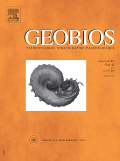
GEOBIOS
Scope & Guideline
Bridging Earth Sciences and Cosmic Discoveries
Introduction
Aims and Scopes
- Paleobiology and Fossil Record Analysis:
Research articles frequently explore the fossil record of various organisms, providing insights into their evolution, biodiversity, and the ecological contexts they inhabited. This includes detailed studies of specific taxa and their biogeographical distributions. - Biostratigraphy and Chronostratigraphy:
The journal emphasizes the importance of biostratigraphy in correlating geological strata based on fossil assemblages, aiding in the understanding of temporal and spatial patterns of biodiversity through different geological periods. - Paleoenvironmental Reconstructions:
Many studies aim to reconstruct past environments, utilizing fossil evidence to infer climatic conditions, ecological dynamics, and the interactions between biotic and abiotic factors over geological time. - Integrative Approaches in Paleontology:
The journal encourages interdisciplinary methods, combining paleontological data with geochemical, sedimentological, and stratigraphic analyses to provide a comprehensive understanding of past life and environments. - Evolutionary Biology and Systematics:
Research often focuses on the evolutionary relationships and phylogenetic implications of various fossil groups, enhancing the understanding of lineage diversification and morphological adaptations.
Trending and Emerging
- Integration of Geochemical Analyses:
There is a growing trend toward incorporating geochemical methods in paleontological studies, which helps in reconstructing ancient climates and environments more accurately, thus providing a multi-faceted view of past ecosystems. - Focus on Biogeographical Patterns:
Recent articles increasingly emphasize biogeographical studies, analyzing the distribution of taxa across different geological periods and how these distributions correlate with past environmental changes. - Diversity and Evolution of Specific Taxa:
There is an emerging focus on the detailed study of specific taxa, including their evolutionary history and ecological roles, as seen in increased publications on unique fossil groups like bryozoans and conifers. - Paleobiological Implications of Climate Change:
Research exploring the implications of past climate changes on biodiversity and evolutionary processes is on the rise, indicating an interest in how historical data can inform current ecological and climatic challenges. - Use of Advanced Technologies in Paleontology:
The application of advanced technologies, such as machine learning and imaging techniques, in paleontological research is gaining traction, enhancing the precision of fossil analysis and interpretation.
Declining or Waning
- Recent Historical Ecology:
There appears to be a waning interest in studies focused solely on recent historical ecology, particularly those that do not integrate fossil data. This might be due to a shift towards more rigorous paleontological research that emphasizes deep time analysis. - Anthropogenic Impact Studies:
Research articles addressing anthropogenic impacts on fossil records and ecosystems have decreased. This could indicate a shift back to more traditional paleontological studies rather than contemporary ecological assessments. - Microfossil Studies:
Although microfossils play a crucial role in paleobiological research, there has been a noticeable decline in publications specifically focused on microfossil taxonomy and ecology, possibly due to a broader focus on macrofossils and larger-scale ecological dynamics.
Similar Journals

RIVISTA ITALIANA DI PALEONTOLOGIA E STRATIGRAFIA
Unveiling the Secrets of Paleontology and StratigraphyRIVISTA ITALIANA DI PALEONTOLOGIA E STRATIGRAFIA, published by Università degli Studi di Milano, is a leading open access journal dedicated to the fields of Paleontology, Geology, and Stratigraphy. Established in 1979, this prestigious journal fosters the dissemination of high-quality research and innovative studies within these disciplines, holding a commendable Q2 ranking in Geology, Paleontology, and Stratigraphy as of 2023. The journal’s commitment to accessibility since 2016 underlines its objective to promote the sharing of knowledge among researchers, professionals, and students alike. With its notable Scopus rankings reflecting a solid performance in the Earth and Planetary Sciences, particularly in Paleontology and Stratigraphy, RIVISTA ITALIANA serves as a vital resource for those seeking to stay informed on the latest advancements and discoveries within the geological sciences. For further inquiries, the editorial office is located at C/O RIVISTA ITALIANA PALEONTOLOGIA STRATIGRAFIA, VIA MANGIAGALLI, 34, 20133 MILANO, ITALY.

Fossil Record
Exploring the Depths of Time Through FossilsFossil Record is a prestigious open access journal pioneering the field of paleontology, published by Pensoft Publishers in Germany. Since its inception in 1998, it has provided a vital platform for the dissemination of groundbreaking research that advances our understanding of ancient life and environmental change through time. Holding an impressive Q2 quartile ranking in the field and securing a notable position among the top 73rd percentile of paleontological journals, Fossil Record ranks #31 out of 113 in the Scopus classification of Earth and Planetary Sciences. With a commitment to quality and accessibility, the journal not only encourages critical dialogue among researchers, professionals, and students but also promotes the sharing of knowledge worldwide. Explore its comprehensive repository of articles to stay abreast of the latest findings that shape our understanding of the planet’s history.

PALEONTOLOGICAL JOURNAL
Unearthing the Past, Shaping the Future.The PALEONTOLOGICAL JOURNAL, published by PLEIADES PUBLISHING INC, is a premier platform for the dissemination of research in the field of paleontology. With an ISSN of 0031-0301 and E-ISSN 1555-6174, this journal serves the academic community by providing insights into fossil studies, evolutionary biology, and the historical narrative of life on Earth. Despite being categorized in the Q3 quartile for 2023 and currently holding a Scopus rank of #84 out of 113 in the Earth and Planetary Sciences- Paleontology category, it remains a valuable resource for researchers and practitioners. The journal's coverage spans from 1990 to 2024, offering a comprehensive historical perspective while also addressing contemporary issues in paleological research. Scholars and students alike benefit from its rigorous peer-reviewed articles and the opportunity to access vital knowledge in the ever-evolving field of paleontology.
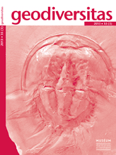
GEODIVERSITAS
Connecting Scholars Through Earth Science DiscoveriesGEODIVERSITAS, an esteemed journal published by the Museum National d'Histoire Naturelle, represents a significant contribution to the fields of geology and paleontology. With an ISSN of 1280-9659, this peer-reviewed publication has established itself as a vital resource for researchers, professionals, and students alike, disseminating high-quality and innovative research since its inception in 2002. Covering a broad spectrum of topics within earth sciences, GEODIVERSITAS not only showcases cutting-edge studies but also fosters a deeper understanding of geological and paleontological phenomena. Ranked in the Q2 category of both geology and paleontology for 2023, the journal exemplifies rigorous scholarly standards and makes significant strides in enhancing knowledge within these disciplines. With its headquarters in Paris and a commitment to scientific excellence, GEODIVERSITAS stands as a leading voice in contemporary earth science research, inviting contributions that drive forward the conversation in geology and paleontology.
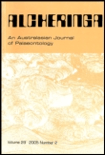
ALCHERINGA
Bridging Past and Present in Paleontology and BehaviorALCHERINGA, published by Taylor & Francis Ltd, is a distinguished academic journal that has been at the forefront of research in the fields of ecology, evolution, behavior, systematics, and paleontology since its inception in 1975. With an ISSN of 0311-5518 and E-ISSN 1752-0754, this journal serves as a critical platform for the dissemination of high-quality research, contributing significantly to the understanding of biological and geological sciences. Ranking in the Q3 quartile for both Ecology, Evolution, Behavior and Systematics, as well as Paleontology, ALCHERINGA is well-positioned within the academic community, attracting submissions from researchers across the globe. The journal's Scopus ranks further highlight its relevance, particularly its position in the 51st percentile for Ecology and the 50th percentile for Paleontology. Although it does not operate under an open access model, ALCHERINGA remains committed to providing valuable insights and fostering discussions that are essential for the advancement of these vital scientific disciplines. Researchers, professionals, and students are encouraged to explore the profound implications of the studies published within, making it an indispensable resource for anyone aiming to deepen their expertise in these fields.

ACTA PALAEONTOLOGICA POLONICA
Championing Open Access in Paleontological ResearchACTA PALAEONTOLOGICA POLONICA is a leading scholarly journal in the field of paleontology, published by the Institute of Paleobiology, Polish Academy of Sciences. With its open access model established since 1956, the journal ensures that vital research related to Earth's history and the evolution of life is freely accessible to a global audience. Based in Warsaw, Poland, this journal has garnered a respectable impact within the academic community, currently positioned in the Q2 quartile of its field and ranking #47 out of 113 in Scopus for Earth and Planetary Sciences, reflecting its significance in advancing paleontological research. Covering a wide range of topics related to fossil studies and evolutionary biology, ACTA PALAEONTOLOGICA POLONICA serves as a crucial platform for researchers, professionals, and students alike, encouraging the dissemination of innovative ideas and discussions that contribute to our understanding of past life on Earth. As it continues to publish high-quality articles through to 2024 and beyond, this journal remains integral to the ongoing discourse in paleontological sciences.
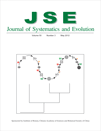
Journal of Systematics and Evolution
Bridging Disciplines in Ecology and Plant ScienceThe Journal of Systematics and Evolution, published by WILEY, is a premier academic journal dedicated to advancing the fields of Ecology, Evolution, Behavior, and Systematics and Plant Science. With a distinguished Q1 ranking in both of these critical categories in 2023, it stands at the forefront of scientific research, placing it in the top quartile among its peers. Featuring both an ISSN of 1674-4918 and an E-ISSN of 1759-6831, the journal has been converging innovative research since its inception in 2008. The journal caters to a global audience of researchers, professionals, and students, providing a platform for disseminating significant findings and fostering academic dialogue. Its impressive Scopus rankings further affirm its impact, coming in at Rank #62/721 in Ecology and Rank #48/516 in Plant Science, highlighting its relevance and influence in these vibrant fields. As an open-access journal, it ensures that groundbreaking research is accessible to all, thus enhancing collaborative opportunities within the scientific community.
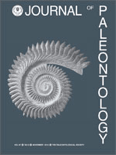
JOURNAL OF PALEONTOLOGY
Advancing Knowledge in Fossil StudiesJOURNAL OF PALEONTOLOGY, published by Cambridge University Press, is a leading scholarly journal dedicated to the field of paleontology, featuring a broad scope that covers fossil studies, evolutionary biology, and earth history. With an ISSN of 0022-3360 and an E-ISSN of 1937-2337, this esteemed journal serves as an essential platform for researchers, professionals, and students to disseminate cutting-edge research findings and insights in paleontological science. The journal holds a significant position within its category, ranking Q2 in the 2023 quartiles and achieving a Scopus rank of #51 out of 113 in Earth and Planetary Sciences – Paleontology, placing it in the 55th percentile of its field. Although it does not currently offer open access options, JOURNAL OF PALEONTOLOGY has been a critical contributor to advancing knowledge from its inception in 1979 through to 2024. Its dedication to rigorous research ensures it remains an indispensable resource for those vested in the understanding of ancient life and ecosystems.

LETHAIA
Unveiling the Mysteries of Life Through TimeLETHAIA, an esteemed journal published by Scandinavian University Press - Universitetsforlaget AS, serves as a vital platform for the dissemination of innovative research in the fields of paleontology as well as ecology, evolution, behavior, and systematics. Established in 1968 and continuing its impactful journey until 2024, LETHAIA has consistently contributed to advancing scientific understanding of Earth's biological and geological history. With a 2023 impact factor placing it in the Q2 category for both Paleontology and Ecology, Evolution, Behavior and Systematics, the journal is recognized for its high-quality, peer-reviewed articles that engage and challenge the academic community. Researchers, professionals, and students alike will find LETHAIA to be an indispensable resource for the latest findings, methodologies, and theoretical advancements in these interlinked disciplines.

CARNETS DE GEOLOGIE
Exploring the Depths of Geological ScienceCarnets de Geologie is a prominent open-access journal dedicated to the dynamic fields of geology, paleontology, and stratigraphy. Published by Carnets Geologie and based in France, the journal has been a platform for scholarly communication since 2002, facilitating unrestricted access to high-quality research. With a robust impact reflected in its 2023 quartile rankings—Q2 in Geology, Paleontology, and Stratigraphy—Carnets de Geologie ranks favorably within Scopus, positioning itself at the 60th percentile for Earth and Planetary Sciences. The journal aims to disseminate innovative research findings and foster academic discourse among researchers, professionals, and students interested in the intricate aspects of Earth's history and processes. Encompassing a broad scope that reflects continuous developments in the geological sciences, Carnets de Geologie is dedicated to advancing knowledge and understanding within its community.